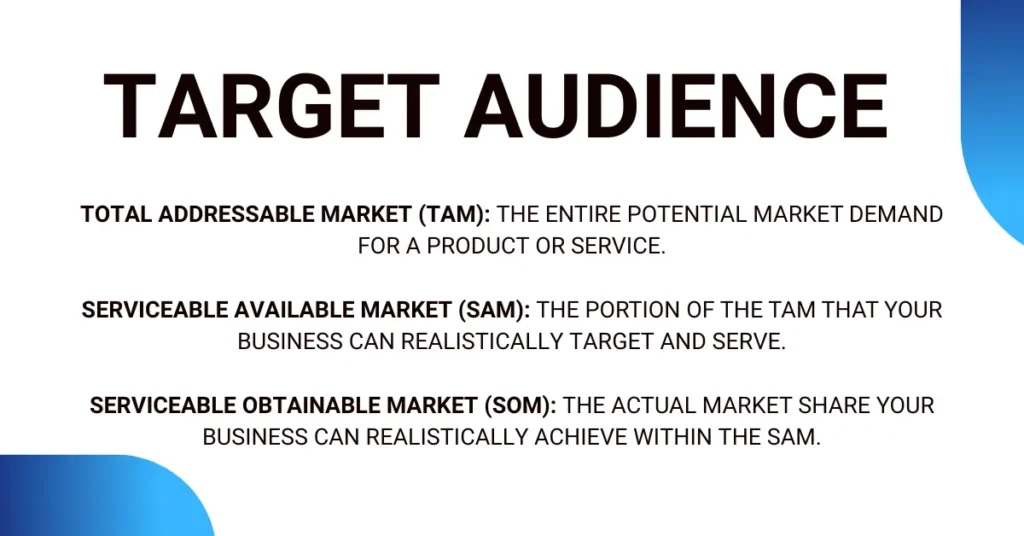How to Successfully Pitch a Business Idea to Investors: Decoding Pitch Deck – Key Elements, Common Mistakes
Last Updated on July 9, 2024 by Sagar Sharma
Pitching a business to investors is far more than just showcasing your unique business solutions to an existing problem. Once you have set foot on the stage of opportunities, you don’t simply remain a founder with a vision. You also have to be a spellbinding storyteller, a seasoned data analyst, a quick thinker, and an orchestrator capable of harmonizing the key elements of your business pitch. To deliver this performance effectively, you need to be confident, understand market dynamics well, and be able to articulate your value proposition with clarity and conviction.
A successful pitch holds the power to secure a signed check and unlock the doors to your desired future. If you are not sure about how to pitch your business idea to investors, fear not, as through expert guidance, and proven strategies, you can captivate investors and pave your way to entrepreneurial success.
What is a Business Pitch?
In a nutshell, a business pitch is a compelling presentation of your business idea delivered to impress the investors and ultimately, receive funding for your business. A business pitch can be delivered in various formats – verbal, video presentation, demo, virtual/online, one-to-one, etc.
During the pitch presentation, the speaker navigates the investors through the USPs, market opportunities, competitive advantages, etc. of their business. The pitcher’s ultimate goal is to present a problem that they have detected and a sure-shot solution that compels the investors.
A business pitch requires to be clear enough for the sharks to understand and compelling enough to make them reach for their pens, to sign those game-changing cheques.
Pitching a business idea to your investors can be quite intimidating for fresh startups. After all, getting a cheque from angles who stomach a dozen pitches every day necessitates something that makes them lean forward, or raise eyebrows at least.
There is no denying that pitching an investor is a tough nut to crack. However, making it manageable is possible. Allow us to guide you through the right process of how to pitch a business idea to investors and position yourself for a delightful “cheque-mate” moment when that investment comes rolling in.
How to Pitch a Business Idea to Investors?

Pre-Pitch Preparation
Soon as the founders realize that they need to come up with a compelling pitch for their potential investors, they immediately start running around, ruminating about the most effective way to convey their vision. We understand that. However, there are a couple of prerequisites for which you have to take back a step and sit down for some time. Before you decide on what to include in your business model pitch deck, you must do the pre-pitch preparation. This process involves deeply understanding your business, your market, your value, “a lot” of pitch practice, and everything in between. Here’s what you need to do:
1. Comprehensive Market Research: You need to be fully aware of your target audience at the time of your pitch. Many of the startup founders believe that since they have been doing business for a couple of years, they know their business and show up on the stage unprepared. This is a major NO-NO. Conduct comprehensive market research about the industry you are trying to win. This primarily involves knowing your target audience well enough, knowing even more about your competitors, identifying your USPs, etc.
2. Research Your Investors: Having as much knowledge as possible about your potential investors will come in handy while generating the business pitch deck. You may require answers to a few questions about your investors – How involved are the investors with their portfolio companies? Do they invest in specific industries? What is their typical check size? What is their preferred valuation range? You’d also need to closely observe their style of doing business, their negotiation approach, and their decision-making process.
3. Know your Customers (Existing and Potential): Founders must possess exact knowledge about their customers. They must have the right data about the customers they have acquired and the customers they are expecting. Know how many customers retain, the total leads you attain, etc. You must present the investors with accurate numbers in order to gain their confidence in your business.
3. Define your value proposition: You must have heard this a thousand times. Investors are always interested to know what problems your business solves and what is your competitive advantage. Your brand’s value proposition sets you apart from other players in the game. Craft a concise and compelling elevator pitch that perfectly communicates your core message.
4. Note down your potential risks: Do not shy away from this one or think it will make you look weak in front of your angels. Knowing your own weaknesses and addressing them would actually help build trust with investors. It goes to prove that you have done your homework well and establishes that you know your business well enough.
5. Anticipate questions and objections: Prepare for the potential questions/objections your investors may have about your business. Giving prompt responses to the investor’s queries will only establish you as an expert in your field.
6. Gather and Fact-check Data: This is where things have gone horribly wrong for many founders. Do not hop on the stage without gathering enough data about their industry such as the market size, growth trends, market dynamics, competitors analysis, etc. Even more importantly, you must fact-check these figures from reputable sources such as government websites, statistical websites, etc.
Key Elements of a Pitch Deck: Secure Your Fundings
Simply put, a pitch deck is a presentation that you as a founder will show to your potential investors. Through your business pitch deck, investors will get to know about your company, what your business model is, your long-term vision, your USPs, etc. Crafting an effective pitch deck is pretty much the biggest task you need to do in order to get funding for business from an investor. Your earlier pre-pitch presentation work will majorly come in handy here.
A business pitch deck involves multiple elements that equally help you get closer to your ultimate goal. Here are a few key elements of a compelling business pitch deck that will increase your chances of success.
Note: The below elements can be included in the order of your choice in your pitch deck.
1. The Problem & Your Solution: This is going to be the most crucial element of your pitch deck. In this segment, you need to address the problem that you have identified and the solution that your business has. Here, you need to clearly address the pain point in the market while explaining how your unique idea eradicates the same. You can use compelling storytelling or real-life case studies to back up your claims.
2. Your USP: Investors care about your USP more than anything else. What is that one thing that sets you apart from your competition? You must clearly communicate why customers would prefer you over other alternatives in the market. Make sure to provide enough evidence or examples that support your claims.
3. Your Competition, and entry barrier: Investors know there is a lot of competition in the market and hence, they want to know how you will survive. You must know and address your competition in your pitch deck while explaining the entry barrier you have in your business.
4. Business or Revenue Model: Now, the big question. How your business generates money? You need to clearly explain your business model. If you have multiple sources of revenue, focus majorly on the biggest. Here, you must also mention the revenue projections for at least the next 5 years and your growth strategies. The revenue projections are going to be somewhat hypothetical. However, you must keep in mind to express practical expectations out of your business.
5. Your Target Market: This is yet another crucial element of your business pitch as it revolves around presenting the compelling numbers that define your target market. Have a firm grasp on the – TAM, SAM, & SOM of your business:

Product Presentation: While talking about your product and ensuring a successful pitch, it is crucial to demonstrate your product if it is presentable in person. For example, if you sell drones, make sure to bring one on the stage. Many investment seekers creatively present their products in the early stages of their pitch also.
Milestones/Achievements: Now is the time to impress your investors with the remarkable milestones your business has accomplished. Mention achievements such as early market traction, any pivotal team-building milestones, profitability scores, user engagement statistics, etc. Don’t underestimate any milestone. You can even talk about your first 1,000 customers or your first 10,000 customers. These milestones will explain your business’s growth trajectory and reinforce the potential for future success. You can also integrate customer acquisition cost (CAC) and customer lifetime value (LTV) to demonstrate efficient customer acquisition and long-term profitability.
How much money you are raising and how much you need: So here we go. The funding you are seeking. This is what your whole pitch is all about and hence, must be clear, transparent, and justifiable. Be transparent about the money you are raising from your venture, your valuation, and the desired investment amount. Now is also the right time to plug in any previous fundings your business has received to showcase your progress. Further, introduce your team and show the investors how your team is heavily armed with the expertise to drive the business forward.
How to Present Your Pitch to the Investors?
You can know all about what to present in your business model pitch deck and still be a dollar short if you do not know how to impressively present your pitch. Yes, as if creating the perfect pitch deck wasn’t daunting enough! Well, loosen up; there are only a few more things you need to know about how to pitch your business to investors:
Start Strong
This may sound cliche, but to successfully pitch a business idea to investors, you need to lay a strong foundation. You never know what or who your investors have encountered before you. So, it kind of makes sense to cheer them up anyways in the very beginning. Grab their attention and hook them up just right with a captivating story about your business or a thought-provoking question.
Keep it Concise
It’s hard to no go overboard when speaking about your business. Make sure to express your enthusiasm, but keep it sweet and simple. Focus on the most important aspects of your business, highlighting key benefits, market potential, and your USPs.
Impactful Visual Aids
Visual presentations are in no way uncommon in business pitches. In fact, approximately 90% of business pitches utilize visual aids or presentation materials. So, it becomes crucial to use 100% of the right hemisphere of the brain (the creative one). Try to do your best at least and think outside the box. Incorporate creative elements, experiment with various colors and typography, illustrations, etc. Just remember to keep your visuals clean, simple, and focused and avoid any clutter and unnecessary details. If you find it hard enough to do on your own, you can always hire a good graphic designer or video editor to do this job for you.
Use Storytelling Techniques
Here’s another one for the creative side of your brain. Using storytelling techniques you can paint a picture in the minds of investors that showcases the potential of your business. Experiment with metaphors, analogies, or vivid examples to help investors understand your business well.
Stay Concise in Q&A
Alas, the investors are going to ask complex questions, a lot! Remember to answer concisely. The best you can do is to provide clear responses that address the question directly.
💡Have a limited amount of time to make a memorable impression? You may want to create something known popularly as an “Elevator Pitch”. Here is how:
The Elevator Pitch
We sincerely hope you learned a lot about how to pitch your business to investors and that you can confidently prepare at least a 5-10 minute business pitch deck. But imagine meeting an investor in an elevator or at an airport (let’s take the non-obvious example).
The clock is ticking faster than it does and you don’t even have the time to say “Let’s do this!” in front of the mirror. You ought to figure out how to pitch a business idea in less than a minute. Don’t sweat. If you are reading this, you are probably not in that situation yet.
To successfully pitch a business idea to an investor in such a short period of time is the essence of “The Elevator Pitch”. Elevator pitch helps you to quickly capture attention, convey value, and leave a lasting impression, all within the time it takes for an elevator ride (or before your investor’s flight is called). Here is how you prepare a foolproof elevator pitch that’ll work even for the freshers:
How to Create an Elevator Pitch for Your Business?

Identify Your Goal: First thing first – you need to know what you are going to talk about in your elevator pitch. Are you going to talk about your business as a whole or a new product idea that you believe is groundbreaking? Whatever you decide to surround your elevator pitch around, remember it is going to be “the objective” of your pitch.
Elaborate on Your Role: What is it that excites you the most about “your business”? Describe what your business does and what problems you solve in a single sentence. Now while writing this magical statement, think about “what excites you the most about your business”. Your pitch must be filled up to the top with enthusiasm and bring a wide smile to your face. In a time-constrained situation, the investor may or may not remember everything you say, but they will most probably remember your zeal.
Highlight Your Unique Selling Proposition: After you have efficiently explained your business, your USP must be the next thing you’ve got to talk about. To explain your USP quickly in your elevator pitch, focus on the differentiating factors that set your business/idea apart from competitors. A smart way to fasten up the process is to use concise and compelling language while only focusing on emphasizing the benefits and advantages your USP brings to customers. Make sure to script it again and again and edit it with memorable phrases and statements.
Initiate Interaction with a Thoughtful Inquiry: Since you are in a time-restricted zone, by the time you finish your rant, your ears must be itching to hear from the investor. A smart way to push an investor to talk is to ask open-ended questions. These are the questions that can not be answered in plain “yes” or “no”. For example, you can ask: “So, how does your organization approach the training of new individuals?”
Put it all together: Once you have finished your script, consider it as your first draft. You have to put it all together again and again until it makes sense in the shortest duration possible. Speak and time your script multiple times to get to an average. The ideal elevator script must not be longer than 20-30 seconds.
Rehearse and polish: Practice until you are as close to perfection as possible. Even if you have crafted the best 150-200 words to speak when the time comes and you do not practice, you are likely to forget more than 100 of them. Other than not forgetting the script, you also want to make sure that you sound confident, natural and smooth. Add maintaining proper body language on top of that and you’ve got a whole performance that demands serious practice. So stand in front of a mirror a hundred times over until your reflection can sell your business back to you.
Common Mistakes Entrepreneurs Make When Pitching a Business Idea
As much as the founders emphasize what to present in their business pitch, it is crucial that they also know the common mistakes that new investment seekers while pitching. Here are a few you must know about:
Not Doing Homework
You may find it unbelievable, but not doing the basic homework is the most common mistake entrepreneurs in the pitching process. In order to successfully pitch your business idea to investors, you must know all of these:
- The target audience.
- Problems your business solves.
- How you are better than others.
- Entry barriers.
- Core team.
- Exit plan for the investors.
Not Knowing Investors
We have discussed it before. Not knowing who you are going to encounter could be your biggest slip. An investor may or may not know you before your pitch, but you must know all about your potential investors. You must have the answer to questions like the following::
- What is the investment pattern of the investor?
- Is the investor only interested in a specific segment?
- What is the size of the companies they invest in?
- How do they treat their portfolio companies? How much do they get involved in helping?
Figuring out the answers to such questions will help in better understanding the investors and in making an informed decision about seeking investments from the right investors.
Delivering a Boring Pitch
We live in the 20th century where these days, the attention span of humans is less than a goldfish. The attention span of an investor (not that they are not humans) is even less. If your pitch bores the investors, your idea, no matter how exciting it is to you, will also be boring for the investors. Try to mix things up – numbers, data, projections, creativity. Keep it concise enough to digest and creative enough to entertain.
Missing on Key Elements
Missing out on key elements of your business pitch is another common mistake made by a fresh entrepreneur. You will obviously know your USP, but mentioning it in the business pitch to get investment is highly important. Similarly, for some startups, their previous funding round may be a key element. Existential data about revenue and profitability is yet another important element in the business pitch.
Failing to Illustrate the Profit
Again, your profits quickly explain that your business is doing well. To back it up, you must present your future growth strategy and your well-calculated revenue projections. Lay out a well-structured financial plan for the investors as they expect the entrepreneurs to have a clear vision of their business goals.
Forgetting to Follow Up
A mistake every investment seeker has made at least once at the beginning of their journey is not following up. No matter if your pitch went good, bad, or ugly, always take a follow-up from your potential investors. It is a small gesture but it definitely leaves a memorable impact.
Failing to Allot Enough Time for Questions
While you are working on your pitch, make sure to allot enough time for the Q&A. Anticipate what your potential investors may ask and what exactly is the clear and concise answer. Ensure to allot enough time to answer as many questions as investors may have. Practice your answers again and again to ensure a clear and understandable speech delivery.
Not Preparing a Demo
If your product can be demonstrated, it is crucial that you set up a demo to show to your investors. If it requires a special set-up, be sure to reach a few minutes before. Ensure that your demo works well and if, for some reason it malfunctions, skip it instead of trying to fix it. Demonstrate your product via the presentations and ensure to bring physical copies of your presentation, if anything goes south during the on-screen presentation.
FAQs about How to Pitch a Business Idea to Investors
Q: What do you say in a business pitch?
A: In a business pitch, you present your business idea, its value proposition, target market, revenue model, and how it solves a problem or meets a need.
Q: How do I sell my idea to an investor?
A: To sell your idea to an investor, focus on highlighting its market potential, competitive advantage, and return on investment.
Q: How to start a business pitch?
A: Begin by introducing yourself and your business, capturing the audience’s attention with a compelling hook or problem statement.
Q: How can I pitch faster?
A: Pitch faster by condensing your key points, using impactful language, and emphasizing the value proposition.
Q: How to pitch in under 30 seconds?
A: Pitch in under 30 seconds by crafting a concise and compelling elevator pitch that captures the essence of your idea.
Q: What are the 3 things that are most important in pitching a business idea?
A: The three most important things in pitching are a clear value proposition, market validation, and a strong team.
Q: How to pitch an idea to a large company?
A: To pitch an idea to a large company, emphasize the benefits it brings, align it with its goals, and showcase its potential impact.
Q: How to create a pitch deck for investors?
A: Create a pitch deck for investors by including key sections like problem statements, solutions, market analyses, business models, and financial projections.
Q: What is an elevator pitch in business?
A: An elevator pitch in business is a concise and persuasive summary of a business idea or product that can be delivered in a short amount of time, typically within the duration of an elevator ride.


